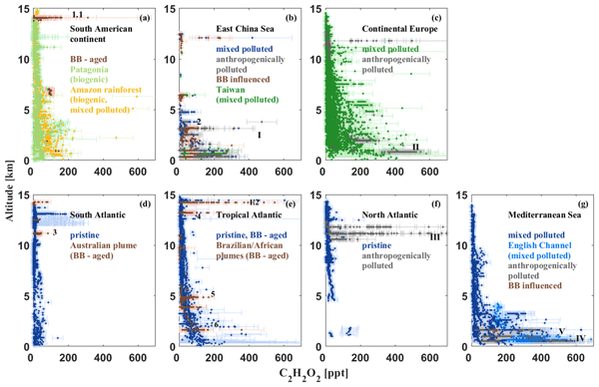Airborne glyoxal measurements in the marine and continental atmosphere: comparison with TROPOMI observations and EMAC simulations
Flora Kluge, Tilman Hüneke, Christophe Lerot, Simon Rosanka, Meike K. Rotermund, Domenico Taraborrelli, Benjamin Weyland, and Klaus Pfeilsticker

Abstract
We report on airborne limb and nadir measurements of vertical profiles and total vertical column densities (VCDs) of glyoxal (C2H2O2) in the troposphere, which were performed aboard the German research aircraft HALO (High Altitude and LOng Range) in different regions and seasons around the globe between 2014 and 2019. The airborne nadir and integrated limb profiles agree excellently among each other. Our airborne observations are further compared to collocated glyoxal measurements of the TROPOspheric Monitoring Instrument (TROPOMI), with good agreement between both data sets for glyoxal observations in (1) pristine terrestrial, (2) pristine marine, (3) mixed polluted, and (4) biomass-burning-affected air masses with high glyoxal concentrations. Exceptions to the overall good agreement are observations of (1) faint and aged biomass burning plumes over the oceans and (2) of low-lying biomass burning or anthropogenic plumes in the terrestrial or marine boundary layer, both of which contain elevated glyoxal that is mostly not captured by TROPOMI. These differences in airborne and satellite-detected glyoxal are most likely caused by the overall small contribution of plumes of a limited extent to the total glyoxal absorption in the atmosphere and the difficulty in remotely detecting weak absorbers located close to low reflective surfaces (e.g. the ocean in the visible wavelength range) or within dense aerosol layers. ...
